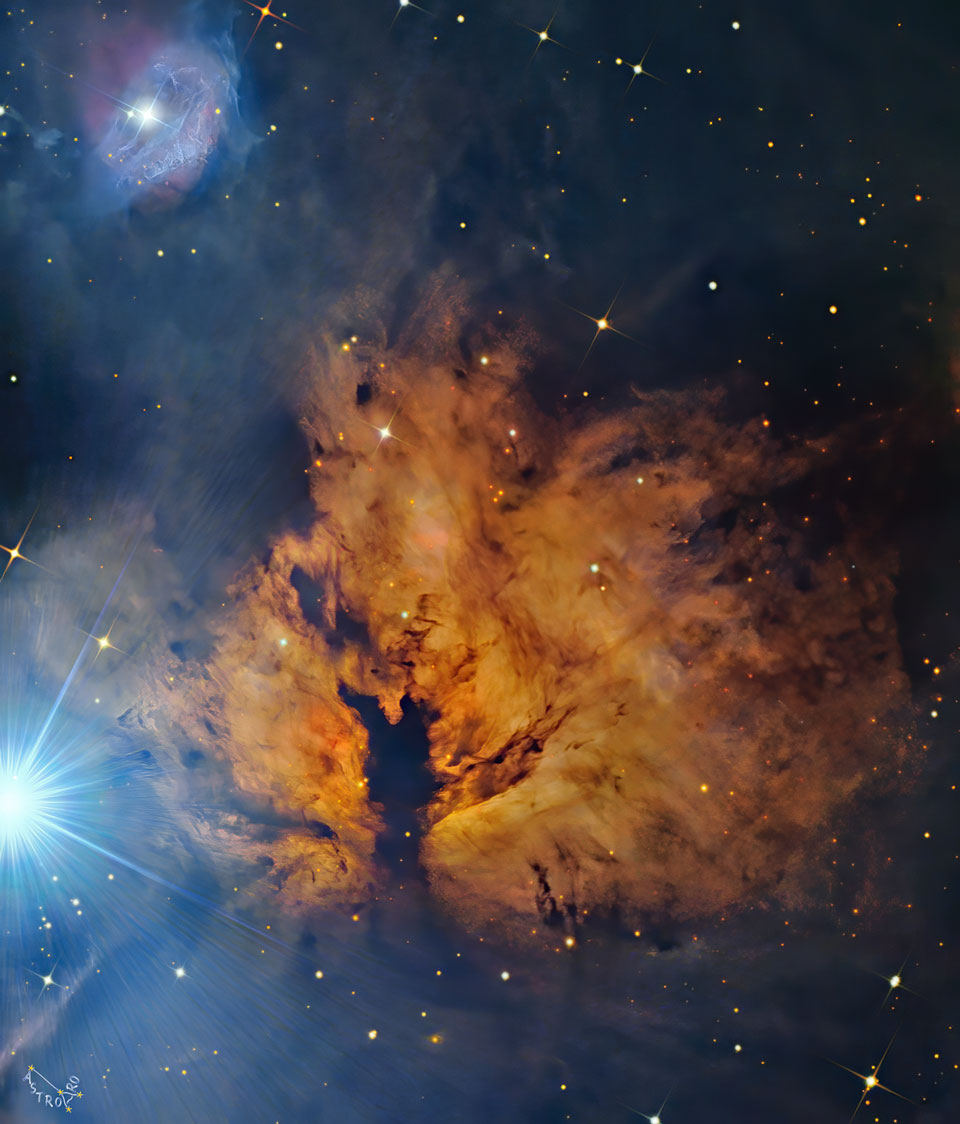2021年04月12日
Alnitak and the Flame Nebula
Image Credit & Copyright: Team ARO
Explanation: What lights up the Flame Nebula? Fifteen hundred light years away towards the constellation of Orion lies a nebula which, from its glow and dark dust lanes, appears, on the left, like a billowing fire. But fire, the rapid acquisition of oxygen, is not what makes this Flame glow. Rather the bright star Alnitak, the easternmost star in the Belt of Orion visible on the far left, shines energetic light into the Flame that knocks electrons away from the great clouds of hydrogen gas that reside there. Much of the glow results when the electrons and ionized hydrogen recombine. The featured picture of the Flame Nebula (NGC 2024) was taken across three visible color bands with detail added by a long duration exposure taken in light emitted only by hydrogen. The Flame Nebula is part of the Orion Molecular Cloud Complex, a star-forming region that includes the famous Horsehead Nebula.
Tomorrow’s picture: a suprising wobble
参宿一与火焰星云
影像提供与版权: Team ARO
说明: 为何火焰星云会这么明亮呢?在猎户 座方向1,500光年远之处有一团星云,它的辉光和黝黑尘埃带,让它看来形似一盆火。然而,产生常见凡火的快速氧化过程,并非这盆宇宙火焰发光的原因。驱动火焰星云发光的真正原因,是星云左侧、猎人腰带最东边的明亮参宿一。它发出的高能辐射照耀火焰星云,把星云氢气的电子剥离,当电子和电离氢复合时,就发出我们所见到的辉光。上面这幅火焰星云 (NGC 2024)主题影像,整合了摄于三个可见光波段的照片,和一张摄于氢发光波段、用于突显细部结构的长曝光照片。火焰星云是猎户分子云复合体的一部份,著名的马头星云,也是这个恒星形成区的成员之一。
明日的图片: a suprising wobble







